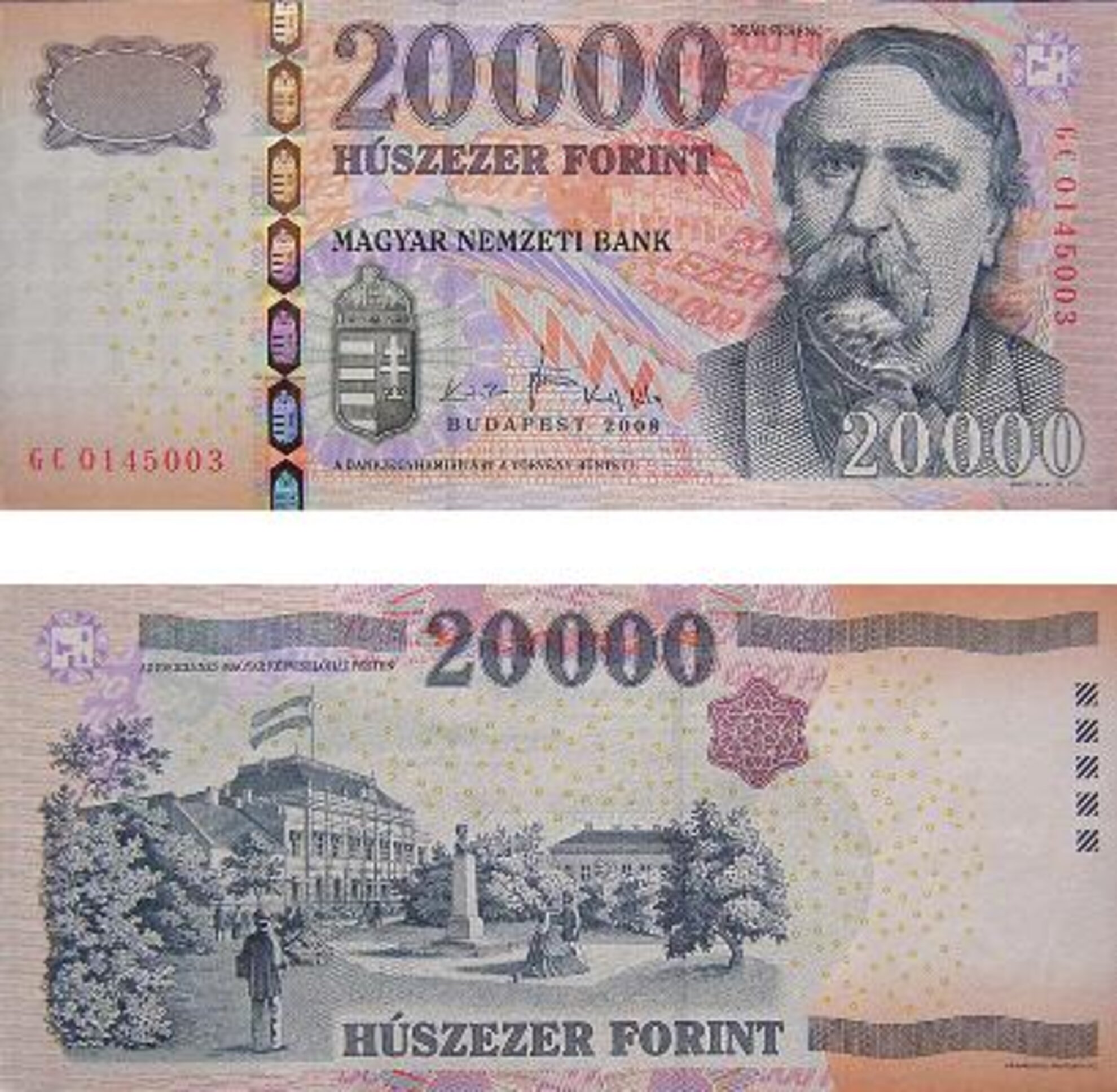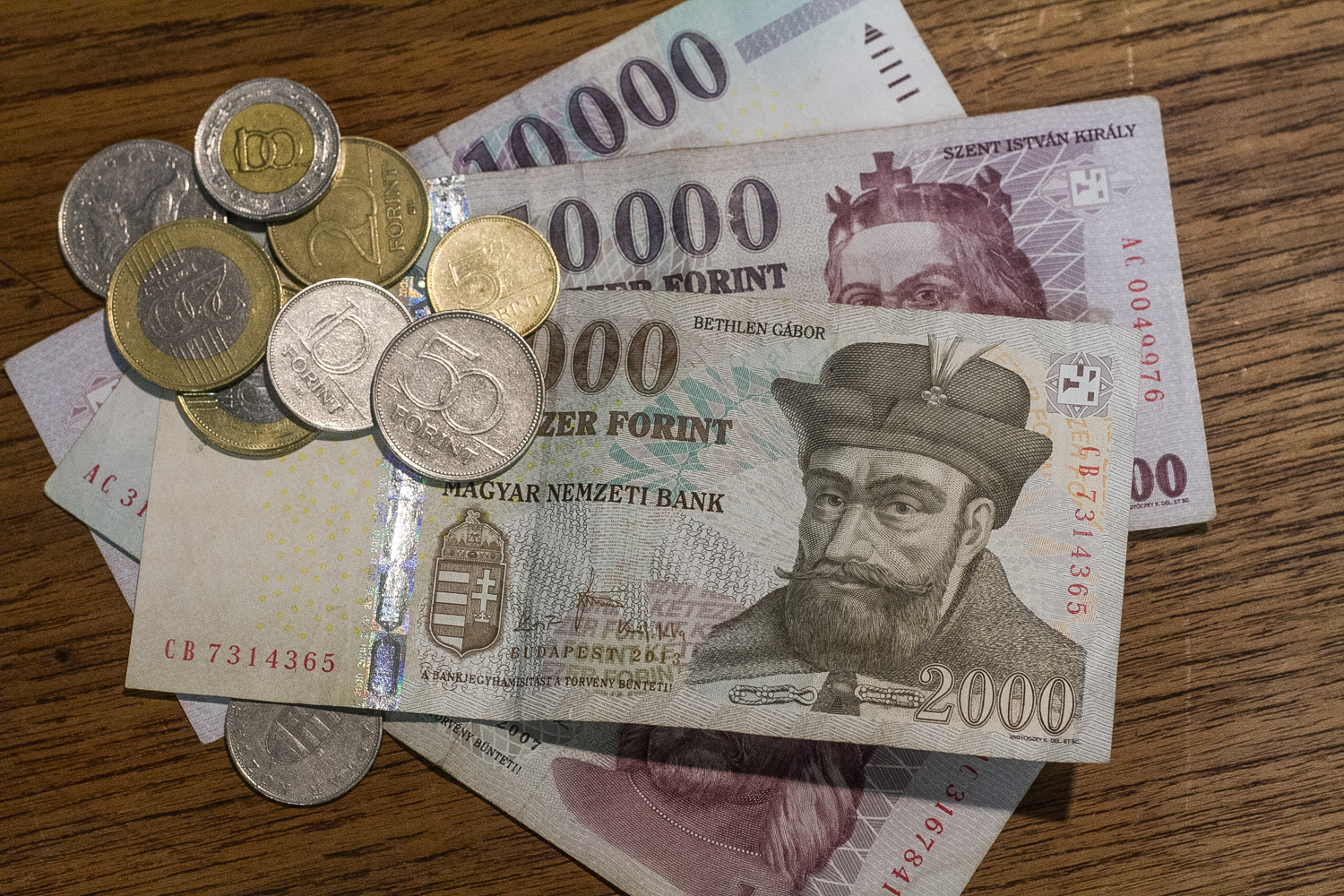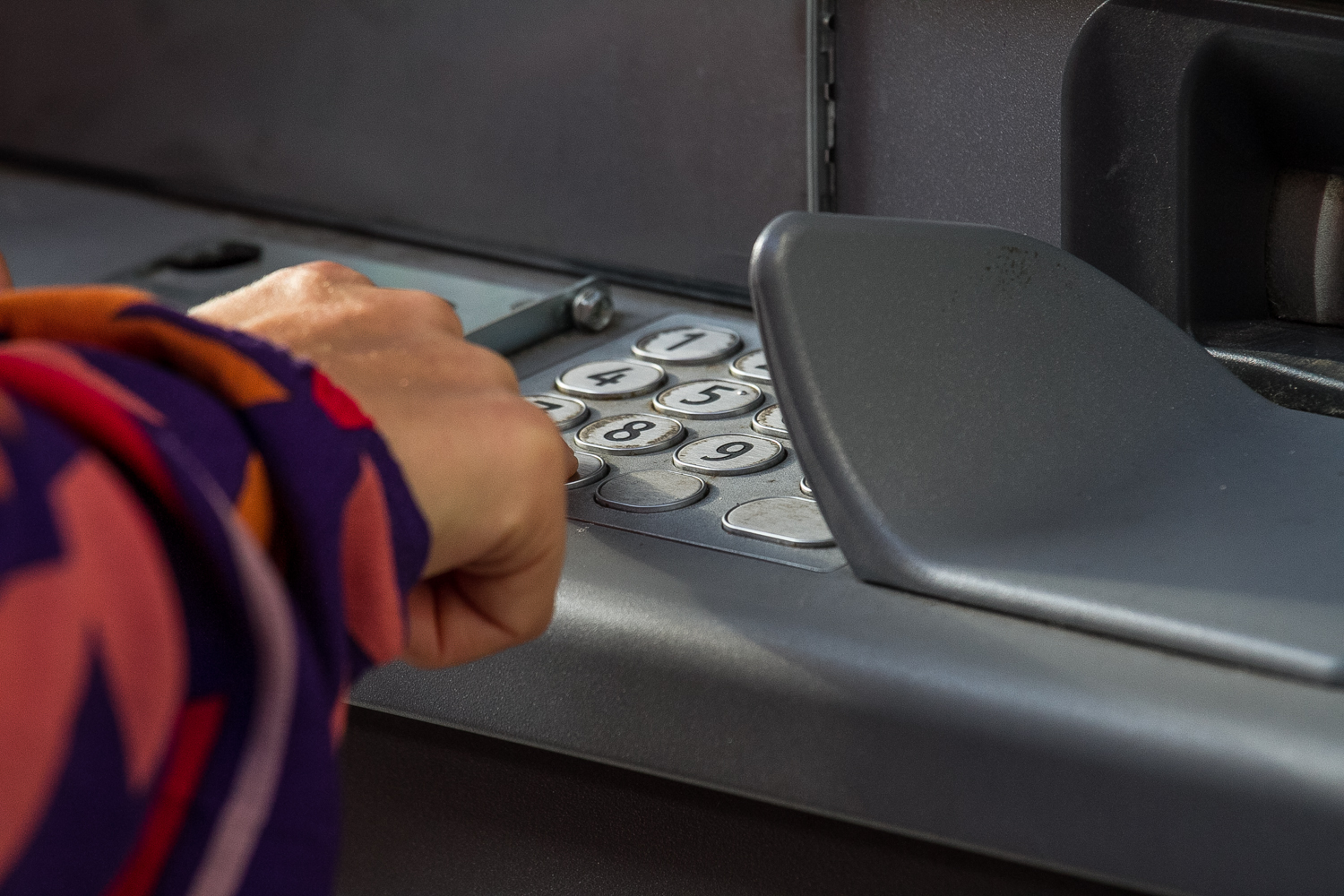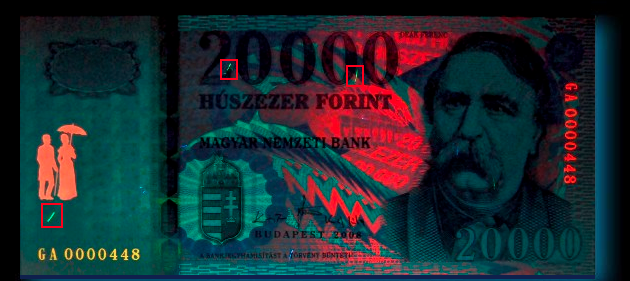1/8
The Hungarian Forint aka HUF
Hungary’s currency is the Hungarian Forint. This is either shortened to the code HUF or the symbol Ft. When buying things, locals are most likely to just say “Forint”, pronounced for-int. In Budapest’s more touristy places Euros might be accepted with the store’s exchange rate displayed on the counter, but change is likely to be given in Forints. When asking for the bill at restaurants the waiter will often ask “készpénz, kártya?” which means “cash or card?” but many places don't take bankcards so it’s worth having some cash on you.
2/8
Who's on each note?
Hungarian bank notes value from 500 Ft all the way through to 20,000 Ft. It can be annoying, but some smaller shops might not have change for the bigger bills, but usually they find a way around this by getting change from a nearby store. The notes have loads of zeroes so make sure you’re not getting a 1,000 Ft note back back when you should be getting a 10,000 Ft note! On each note is an outstanding Hungarian person on one side with a place relating to that person on the reverse. Take a look at this gallery for a quick explanation of who is on each:

3/8
What's on each coin?
There are loads of denominations of coins too! The 200 Ft coin has a gold colour ring on the outside and is a silver colour on the inside. This should not to be confused with the 100 Ft that has a gold coloured on the inside and a silver coloured ring on the outside. The 200 Ft is much larger than all the other coins. There are also 50, 20, 10 and 5 Ft coins. There’s no Cent or Eurocent version… whether it’s a note or coin it's all just Forint. One Forint used to be made up of 100 “fillér” but fillér coins have not been in circulation since 1999 due to their low value.

4/8
Special edition notes
Commemorative notes and collector's edition coins have also been made. Special edition 2000 Ft bank notes were printed to celebrate the millennium in the year 2000, while in 2006 a specially designed 500 Ft note was created for the 50th anniversary of the 1956 Hungarian revolution. As you can see in the gallery below a new version of the 10,000 Ft note was released in 2014, which has new security features.

5/8
Notes and coins no longer in circulation
The Forint has been around since the 1st of August 1946, the name deriving from the city of Florence where gold coins were minted in the 1200s, a currency called the 'florentinus' later came to Hungary in the 1300s, which later became the 'forint'. Since the introduction of the current-day Forint in 1946 some note and coin designs have come and gone. For example, the 200 Ft bank note was phased out and just the coin of that value remains. The current set of notes were phased-in in 1997.
6/8
ATMs and banks
Most ATMs accept foreign bankcards and ATMs are very easy to find throughout Budapest, with most open 24 hours a day. There are some ATMs securely located behind glass doors and you might have to swipe your bankcard to open the door. The most common banks in Budapest include OTP, Erste, Raiffeisenbank, K&H and CIB Bank. Banks themselves are generally open from 8 or 9am until 4 or 5pm on weekdays. On weekends most banks are closed although the OTP at West End City Centre is open on Saturdays. Depending on your bankcard as well as the bank you use to withdraw cash there is often an additional charge for withdrawals.
7/8
Money exchange
There are plenty of money exchange shops throughout the more central and touristy places in Budapest. The exchange rates and fees can differ slightly so it’s worth shopping around to find the best one. These money exchangers accept the most common currencies, while banks can help exchange less-common currencies.
8/8
Anti-fraud design features
Hungarian Forint notes have various design features to protect against fraud such as hidden pictures, holographic strips, and images that only appear under various UV lights or with magnification. The Central Bank of Hungary website has a cool feature where you can check out some of its anti-fraud measures. Click on the “security features” link under each banknote and then using the menu choose to see the various security features. We also discovered that the notes are made of cotton and are the standard size of 154mm x 70mm.
Damaged notes can be exchanged at the Central Bank of Hungary, other credit institutions and post offices as long as more than 50% of the damaged note is supplied.







